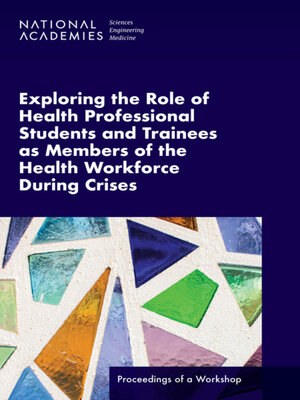Exploring the Role of Health Professional Students and Trainees as Members of the Health Workforce During Crises
ebook ∣ Proceedings of a Workshop
By National Academies of Sciences, Engineering, and Medicine

Sign up to save your library
With an OverDrive account, you can save your favorite libraries for at-a-glance information about availability. Find out more about OverDrive accounts.
Find this title in Libby, the library reading app by OverDrive.



Search for a digital library with this title
Title found at these libraries:
| Library Name | Distance |
|---|---|
| Loading... |
The onset of COVID-19 pandemic and inundation of the U.S. health care system emphasized infrastructural and health professional education vulnerabilities. A planning committee of the National Academies of Sciences, Engineering, and Medicine Global Forum on Innovation in Health Professional Education conducted a series of public workshops in the fall of 2021 to explore whether students and trainees should be viewed as members of the health workforce, particular in times of emergency as was experienced during the COVID-19 public health crisis. The planning committee gathered educators, students, administrators, and health professionals to share ideas, experiences, and data to strategize expansion of learning opportunities for medical trainees and enhancement of medical preparedness to unforeseen crises without compromising the quality of patient care. The workshops explored issues such as identifying evidence on value-added roles for students to serve in the delivery of care and in a public health capacity, and balancing the role of learners as consumers (tuition payers) and not licensed providers versus members of the health workforce. This Proceedings highlights presentations and discussions from the workshop.







